AUTHORS of FEEDING THE DRAGON
Interview ©2011
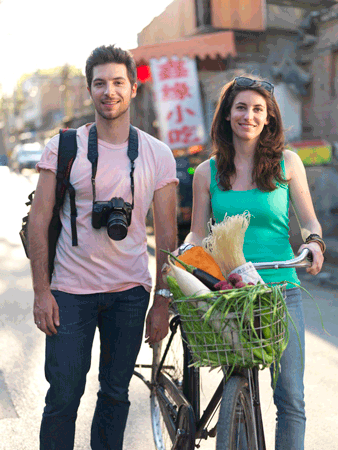
Both fluent in Mandarin by then, during the summer of 2005 traveling by train, plane, rickshaw, motorcycle, horseback and even a donkey cart, together they embarked on a some 9,700-mile three-month trek across nine regions of China, to enlighten Americans that Chinese food is something to make, not “take out.” Feeding the Dragon, fully documented with their photographs, 100 recipes, and a glossary of Chinese ingredients, is both a travelogue, cultural history and cookbook. During her recent trip to New York, where the Tates now live, Lucy Gordan, Epicurean-Traveler.com’s Rome Bureau Chief, talked with them about their love of Chinese culture and authentic Chinese cuisine.
How and why did you first get interested in China?
NT: Baylor University in Texas, where I went to college, had a language requirement. I was going to take Spanish but my Dad suggested that I should learn Chinese since it would be the language of the future. That was in 1999. I took it for a year and found out that Baylor had an exchange program with the University of Beijing which was sending students over to Texas, but no one from Texas had ever gone to China; I was the first. I was only going to go for a semester, but then I loved it and stayed a year. It was kind of a fluke that I owe to my Dad. I liked to write the Chinese characters; they’re artistic and I ended up majoring in graphic design.
MKT: Yes, our father was career air force, but I think one of the reasons he joined the military was that he and my mother, both from Arkansas, were very interested in other cultures, foods, and adventure.
The year Nate studied in China, I was still in High School but I went to visit him during the summer of 2001. It was the first time far away from my parents. We traveled all around China. It was an amazing adventure. I was hooked and ended up studying Chinese in college and in China too in 2004.
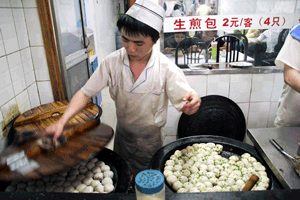
When you were studying in China what were the hardest things to adjust to? What did you miss most about home?
NT: I’d say that, when I was a student that year, I really didn’t miss a whole lot because it was such an amazing experience. I’d never been so far away by myself. I met so many new people; it was great, but maybe I missed American home cooking. Mary Kate and I have just moved back from China. We lived there the last year and a half. After the Olympics in Beijing there are a lot more international restaurants and international grocery stores, but when I was a student there, you couldn’t even find bread. Perhaps it was a good thing because I ended up eating Chinese food all the time.
MKT: The language and the culture are so different that I initially missed communicating and worried about saying the wrong thing or not being able to get my opinions across. But as I became more fluent and felt more comfortable culturally, this stress resolved itself.
Now that you are home what do you miss most about China?
NT: Definitely the food.
MKT: I agree.
Any food in particular?
NT: Chinese Hot Pot. In Beijing, especially in the winter, now that it’s getting cold, it’s such a social thing to go to Hot Pot restaurants where a giant bubbling cauldron of broth is placed in the center of the table and they bring you little slices of meat and vegetables; you dunk them in the pot and let them cook pretty quickly, pinch them out with your chopsticks and dip them into a sesame sauce. It’s a very popular food now in Beijing and I miss that a lot. Mary Kate and I
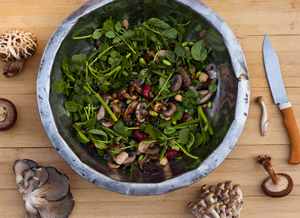 |
|
Yunnan Wild Mushroom Salad
|
were talking the other day about the things we miss and don’t miss. The main thing we don’t miss is the pollution. It’s really stifling. The food is amazing though. That’s what we miss.
MKT: I too don’t miss the pollution and at least in Beijing, there are so many people. The subways can be out of control. New York doesn’t even come close to the crowds on the Beijing subway. As to food, I really miss Yunnan food.
NT: Yes, I would agree with her about Yunnan food. While a lot of Chinese food is stir-fried or fried, Yunnan food is a kind of an anomaly because it’s lighter and healthier and there are actually some salads. The province is in the south of China. It borders on Burma and it has a tropical climate and fruit. There’s a beef stew with papaya. There’s pineapple rice.
Like most countries China must have regional dialects and accents, which is the hardest for you to understand?
NT: Cantonese is the language that they speak in Hong Kong and Guangzhou province. In Chinatown here in New York that’s the main language you hear on the street. That’s a completely different language from Mandarin. The characters are the same, but the pronunciation is completely different.
MKT: In Shanghai, they have Shanghai-nese. I kind of thought we could get around pretty easily anyway and maybe understand it, but it really felt like an entirely different language.
In China, Nate, you designed restaurants and Mary Kate you were a teacher; how did you decide to write this splendid book?
NT: Well, I think that during the summer of 2001 when Mary Kate came to visit me, when we traveled around and had such an amazing time, at some point we realized that we wanted to put together some kind of project about China. I’m a graphic designer and she majored in film, so in 2005 we decided to come back to China and do this book. That’s when we spent three months traveling around writing the book. Initially we thought we’d be able to finish it in three months, but it ended up taking over our lives for the next several years. We came back to the States, got a book deal, and moved back to China.
MKT: We tried so many foods that we’d never tasted before and wanted to introduce them to our fellow-countrymen.
The funniest experience you had writing it? The scariest?
NT: Probably the scariest was getting lost in the remote southern jungles of Xishuagbanna.
MKT: I remember one story that’s in the book when we go to a Xinjiang restaurant in this Muslim region of China with a lot of bread and lamb. It’s one of the largest regions in China and
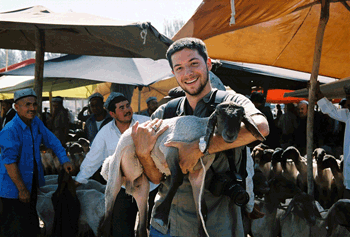 |
|
Nate with a lamb at the market in Xinjiang
|
borders Afghanistan, Pakistan, and Kurdistan. The people don’t look Asian. They speak a language called Uighur (pronounced Wee-gurs), which is kind of like Arabic. It feels like a completely different country. We had an amazingly delicious meal so, as we normally did, we
asked the waiter or the manager to go back in the kitchen and see how they cooked our meal and learn how to make it. The manager said “sure” and she took us in the back and we’re walking around the kitchen. Then the owner arrived and started screaming at us to get out of his restaurant, but, as we’re leaving hastily, he suddenly realized that we’d loved his food and wanted to learn about it so he invited us to come back the next morning. So we come back in the morning thinking we’d just get a quick little lesson on how to make these noodles called laghman locally and la mian in Chinese, which literally means “pulled noodles.” Instead he gave us two white chef outfits and told us to dress in them. There were about fifty other line cooks there — they actually lived in dorms above the restaurant — and we soon found ourselves in a line. We were supposed to work there the whole day, so we did. We did not know what we were doing.
During your extensive travels, almost 10,000 miles criss-crossing China, you must have collected hundreds of recipes, how did you decide which ones to put in Feeding the Dragon?
NT: We picked recipes we thought Westerners would want to make. Some Chinese dishes have weird textures and things like that. For example, we left out a sour soup, which we love, but it takes days to make.
MKT: We debated a lot. We had a lot of trouble narrowing them down to the 100 the publisher wanted. We had to leave out some of our favorites, but we wanted to give our readers a well-rounded picture of China.
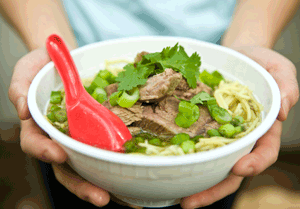 |
|
Beef Noodle Soup
|
I suppose likewise for the photographs; what criteria did you use to make your selection?
NT: Again we had to cut and cut. To get some of our pictures we put ourselves in precarious situations like hanging off of cliffs. Many of them were so hard to get. We didn’t want the pictures to be too literal; we wanted to create a mood. That was the filter we used in choosing our photos. We didn’t want the book to resemble an encyclopedia.
MKT: We wanted to include photos of people we met. For the most part they didn’t object. We had “business” cards made with our names on them and saying that we were cooks; we gave them to the people we photographed.
More or less how many recipes and pictures did you actually filter?
NT and MKT: We had about 130 recipes that we really wanted to put in and that we made over and over as trials. We had a certain page count that our editor gave us and more than 100 just wouldn’t fit. As for the photos, we took thousands of photos. We probably cut about 100 photos that we’d wanted to include.
How many cameras did you take with you on your 9,700-mile, two-month journey?
NT and MKT: We had just two cameras. We had one film and one digital. However, we had several extra lenses. Around half the pictures in the book are film and half are digital.
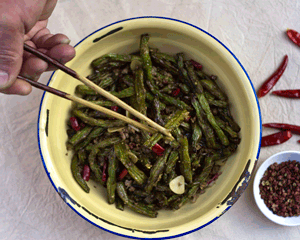 |
|
Sichuan Spicy Green Beans
|
Your favorite recipes in the book?
NT: My favorite is the spicy Sichuan green beans. They are fried green beans. First you fry the raw very long green beans, called “yard-long green beans,” for around ten minutes. They’re about a yard long, but you cut them into pieces about two-inches long before cooking them. Then you let the oil drain off and add lots of spices like Sichuan peppercorn and dried red chilies, a little bit of garlic, ginger, and ground pork and stir-fry everything in a wok for a minute or two. It tastes like nothing we have here in the States, but I love it.
The flavor that Sichuan province is known for is “Ma la” which means “mouth-numbingly spicy.” It’s a unique flavor because the Sichuan peppercorn contains a chemical with that “zing” quality that makes your mouth feel numb. The tip of your mouth, your lips, and your tongue turn numb. It’s a really unique sensation so, when you combine the peppercorns with the dried red chilies, you get “Ma la.”
MKT: I can’t say my absolute favorite because I have so many, but one of them is definitely Mapo Tofu, also a classic from the Sichuan Province. It’s tofu and ground pork in a fiery broth of spicy, chewy bean sauce with ginger and garlic. It also has the Ma la flavor that Nate was talking about. I just think it’s wonderful.
NT: We love spicy food. We learned to love spicy food living in China.
In Xinjiang Province I presume they don’t eat pork?
NT: You’re right. It’s all halal or Muslim kosher.
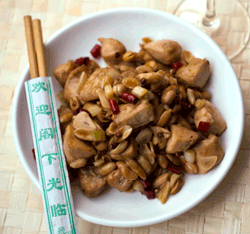 |
|
Sichuan Kung Pao Chicken
|
If your doctor told you could only have one more Chinese meal, what would be the menu?
NT: For my meal I would have Peking duck, hot and sour soup, stir-fried Bok choy, and a Chinese beer.
MKT: I would have wild mushroom salad, pineapple rice, Kung Pao chicken, and mango pudding.
Chinese menus have few sweets; would you say that Western sweets are basically too rich for the Chinese?
NT and MKT: Yes, they think Western desserts are too rich. The desserts they have are made with sweetened red bean paste or sweetened lotus paste. We included our favorite desserts, but there’s not as much variety in China as in the West. Our favorites are fried bananas, Danta vanilla custard tarts which are from Macau and also popular in Hong Kong.
So do the Chinese use sugar?
NT: Yes, it’s funny when they use sugar; they use rock or big chunks of sugar. If you look at a Chinese recipe, for example, it will say two chunk of rock sugar. They sell rock sugar in their grocery stores.
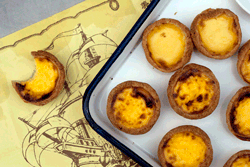 |
|
Macau – Danta Vanilla Custard Tarts
|
A Chinese dish you don’t like?
NT and MKT: There’s something called “Stinky Tofu.” It’s a very popular snack so walking around any city, you’ll walk down the street and a lot of street vendors sell it. You’re overwhelmed by the smell. It smells like a dirty bathroom. It smells like sewage. You smell it and you want to walk the other way, but, if you look, there’s always a line to buy some. It’s chunks of fermented tofu that’s deep-fried and served with chili sauce. We’ve both tried it, but we can’t get past the smell. It tastes like it smells.
Your favorite places in China that the readers of this interview must see?
NT: I would definitely visit Beijing because, as opposed to many cities, The Cultural Revolution damaged, but did not decimate Beijing. In other places The Cultural Revolution destroyed their history, burned down their historical building and got rid of their cultural relics. Instead, Beijing still has a lot of old architecture, The Great Wall nearby, and The Forbidden City. I would also go to Sichuan Province, where you can see the tallest Buddha in the world carved into the side of a mountain; the countryside is beautiful there and you can go on horseback treks. I’d also include Xinjiang Province, the place we mentioned which borders on Afghanistan and Pakistan, because it’s a very old culture, as, of course, all China is, but it’s very inspiring.
MKT: Yes, in Xinjiang Province, they have the largest outdoor bazaar in Asia. There’s a city there called Kashgar, which swells by thousands and thousands of people a couple of times a month, when this market takes place. People from miles away bring their wares on donkey carts to sell there. Part of the bazaar sells goods and the other part sells livestock: goats, camels, yaks…
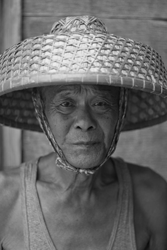
Your favorite market in China?
NT: Certainly this Kashgar Country Bazaar.
Your favorite restaurants in China?
NT: There’s a chain in China called Din Tai Fung that specializes in xiao long bao (small steamed buns) and makes amazing soup dumplings. There’s certainly one in Beijing, one in Shanghai… It’s a Taiwanese company. Outside China it has restaurants in Australia, Hong Kong, Japan, Malaysia, Singapore, South Korea, Thailand, Canada, and the U.S. in Los Angeles and Seattle.
MKT: Another good reason to go to Beijing is that each Chinese province has its kind of embassy there and each one of these houses a restaurant staffed by people from that province. They are really good. I would recommend all of those.
Your favorite Chinese customs or holiday?
NT and MKT: Chinese New Year for its fireworks which last all day and all night for a week, so it can be annoying if you live there and want to sleep. On the actual night of New Year’s it’s really wild. It’s best to be somewhere up high for the best overall views and to avoid the many fires set off by the fireworks. If you’re on top of the Drum Tower, for instance, it looks like all of Beijing is on fire.
Is there a special food that the Chinese eat for good luck in the New Year? In Italy we eat lentils, which supposedly turn into coins.
NT: Boiled Jiaozi dumplings with pork filling and Chinese chives.
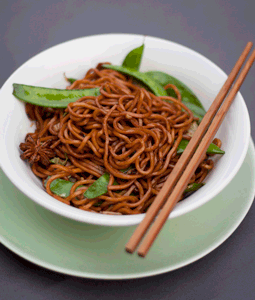 |
|
Shanghai Fried Noodles
|
What are your Chinese zodiac signs?
NT: I’m a rooster.
MKT: I’m a rat.
When you returned home to the US, you came to New York and not Dayton, where your parents live, or Texas where you studied; how did that happen?
MKT: I’d lived here for four before going to China to do the book.
NT: I’ve lived in New York for seven years so it’s home to me now.
Can you repeat the chronology of your time in China?
NT: In 2001 to study for a year and Mary Kate came to visit me; I went back in 2004 and I worked in an advertizing agency there for a summer; then in 2005 we both went back for three months to write the book; and most recently we both lived there for the last year and a half.
MKT: After our three months there in 2005 it took us a few years to get a book deal, hence the gap between 2005 and 2009.
Do you remember when you decided what format to give the book?
MKT: Nate actually started talking about it after a few months of living in China. I thought it was a pretty crazy plan at first (but came around pretty quickly) that China was an amazing country we should promote to others. The Chinese culture is so linked to food that we thought food would be a great way to showcase their different regional peoples and cultures.
NT: In the summer of 2005, when we were starting the book, we had a blog. As you know, a blog has photos, stories, news. I think our blog shaped our book.
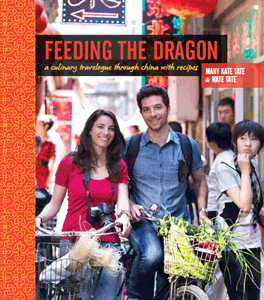
Why is Beijing your base?
NT: For convenience, I would say that Hong Kong is very convenient and that in mainland China it would be Shanghai, but I just love Beijing. Even though they’re tearing the old neighborhoods down, I just love them. They’re called Hutongs, alleyways with little houses where people live. Beijing has many old monuments. I love them.
MKT: There’s also a language factor. Beijing has a standard dialect, which is standard Mandarin. Instead, if you live in Shanghai, you pretty much have to learn Shanghai-nese.
Exactly what does your firm Carotene do?
NT and MKT: Website design for local companies and schools.
Are you writing another book?
NT and MKT: We hope to.
About China?
NT and MKT: People often ask us: “What country are you going to ‘do’ next?” We would love to “do” India. It seems like India is on the same scale as China; it’s a huge country with different pockets of culture, languages, and foods, but we have such a history and connection to China. We put so much of ourselves in this book, it would be hard to duplicate in another country.
Click Here for recipes from Feeding the Dragon
